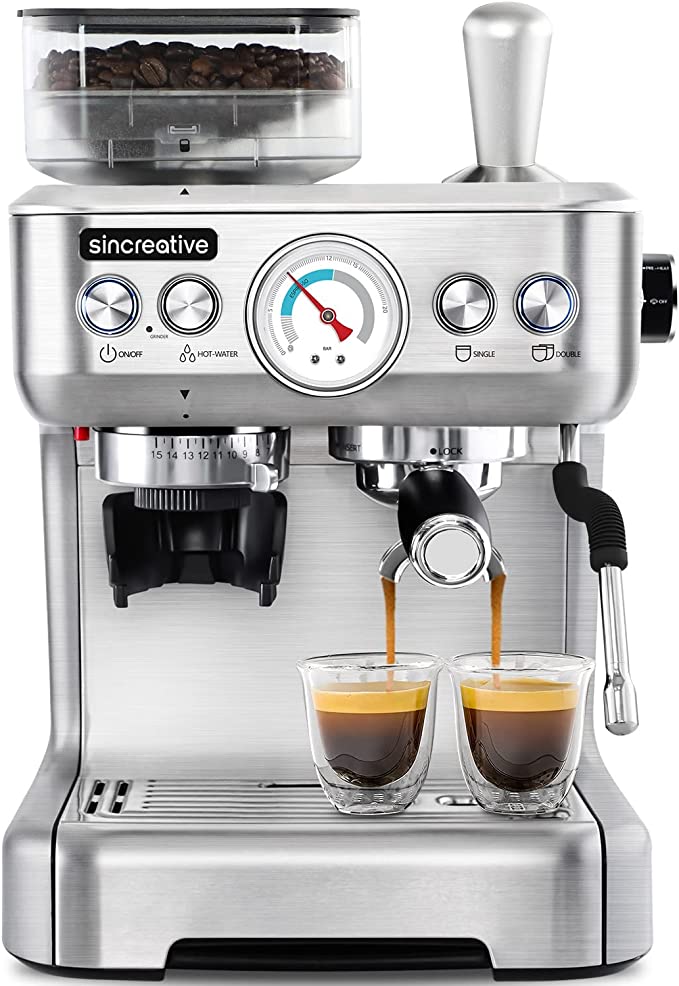Solimo Espresso Capsules: The Truth About "Budget" Nespresso Pods
Update on Nov. 25, 2025, 4:26 p.m.
Let’s be honest about your morning routine. You love your Nespresso machine. The convenience is unbeatable. But there is one part of the ritual that likely makes you wince: the price per cup.
When you are drinking two, three, or four espressos a day, those “premium” costs add up fast. This brings us to the Amazon Brand - Solimo Medium Roast Espresso Capsule. At roughly a third of the price of the big-name brands, it screams “value.” But in the world of coffee, we are often taught that cheap means bad.
Is this true here? Or is Solimo the smartest “daily driver” for your caffeine habit?
As someone who has dissected coffee pricing and profiles for years, I’m going to guide you past the marketing fluff. We aren’t just looking at a pod; we are looking at the economics of extraction and the science of the medium roast. Let’s decode what you are actually getting for your money.
The “Weakness” Myth: Understanding Roast vs. Strength
If you scroll through reviews for Solimo (or any medium roast capsule), you will see a common complaint: “It’s too weak!“ or “It tastes like water!“
Here is the first lesson in our coffee masterclass: Intensity does not equal Caffeine.
Many coffee drinkers equate “strength” with the bitter, punch-in-the-face smokiness of a Dark Roast or the rubbery kick of Robusta beans. Solimo has taken a different route.
- 100% Arabica: They use purely Arabica beans. Arabica is the “sophisticated” sibling of the coffee family. It has about half the caffeine of Robusta but twice the sugar and lipids.
- Medium Roast: They stop the roasting process before the oils burn off.
What this means for your palate:
When you brew this Solimo capsule, you shouldn’t expect a thick, tar-like sludge. Instead, you are getting a nuanced, tea-like body. The flavor profile is built on cereal notes, mild caramel, and a gentle acidity. It’s not “weak”—it’s delicate. If you are looking for a heavy jolt to wake the dead, this isn’t it. But if you want a smooth cup that doesn’t need three spoons of sugar to mask the bitterness, you’re in the right place.
The Engineering: Plastic vs. Aluminum
This is the “elephant in the room” for Nespresso compatible pods.
The original Nespresso pods are aluminum. Aluminum is the gold standard because it’s infinitely recyclable and provides a perfect oxygen barrier. Solimo, to keep costs down, often utilizes food-grade plastic (though specifications can vary by region, user feedback confirms plastic bodies).
Why does this matter?
- The Seal: Plastic pods rely on a different piercing mechanism. Sometimes, if the foil lid isn’t tight enough, you might get slightly less pressure buildup inside the capsule. Less pressure can mean slightly less crema (that golden foam on top).
- The Freshness: Oxygen is the enemy of coffee. Solimo combats this by nitrogen flushing the capsules before sealing them. This creates a protective atmosphere that halts oxidation, keeping the grounds fresh until you pop the seal.
- Mentor Tip: With plastic pods, do not force the lever of your machine. If you feel resistance, lift and re-seat the pod. Plastic is harder for the machine’s blades to pierce than thin aluminum, so be gentle to prolong your machine’s life.
The Sustainable Choice: UTZ Certification
It is rare to find ethical certifications in the “budget” aisle, but this is a pleasant surprise. Solimo capsules are UTZ Certified.
This isn’t just a sticker. It means the coffee was grown using sustainable farming methods. It ensures:
- Better farming practices that respect the local ecosystem.
- Fairer conditions for farmers.
- A traceable supply chain.
For a budget product, having a conscience is a significant value-add. You aren’t just saving money; you’re supporting a system that tries to do better by the planet.
The Verdict: Who is Solimo For?
Let’s wrap this up with a practical buying guide. Coffee is subjective, but value is objective.
You should buy these if:
- You are a “Volume” Drinker: You drink 3+ cups a day. Using Solimo for your first two “maintenance” cups and saving your expensive pods for a special treat is a brilliant financial strategy.
- You Drink Lattes or Cappuccinos: The nuanced, mellow flavor of a medium roast blends beautifully with milk. It doesn’t fight the dairy; it complements it.
- You Dislike Bitterness: If you hate that “ashy” aftertaste of cheap dark roasts, the Solimo Medium Roast will be a refreshing change.
Skip these if:
- You are a Ristretto Purist: If you drink straight, short shots and demand a thick, heavy mouthfeel, you might find the body too light.
- You Need a Caffeine Hammer: If you rely on coffee solely for a massive energy spike, look for a “Dark Roast” or a blend with Robusta.
Final Thought:
The Solimo Medium Roast Espresso Capsule isn’t trying to be a specialized, single-origin experience from a boutique roaster. It is trying to be a reliable, tasty, and affordable daily coffee. And in that specific mission, it succeeds brilliantly. It democratizes the morning ritual, proving you don’t need to spend a fortune to enjoy a quality cup of Arabica.







































